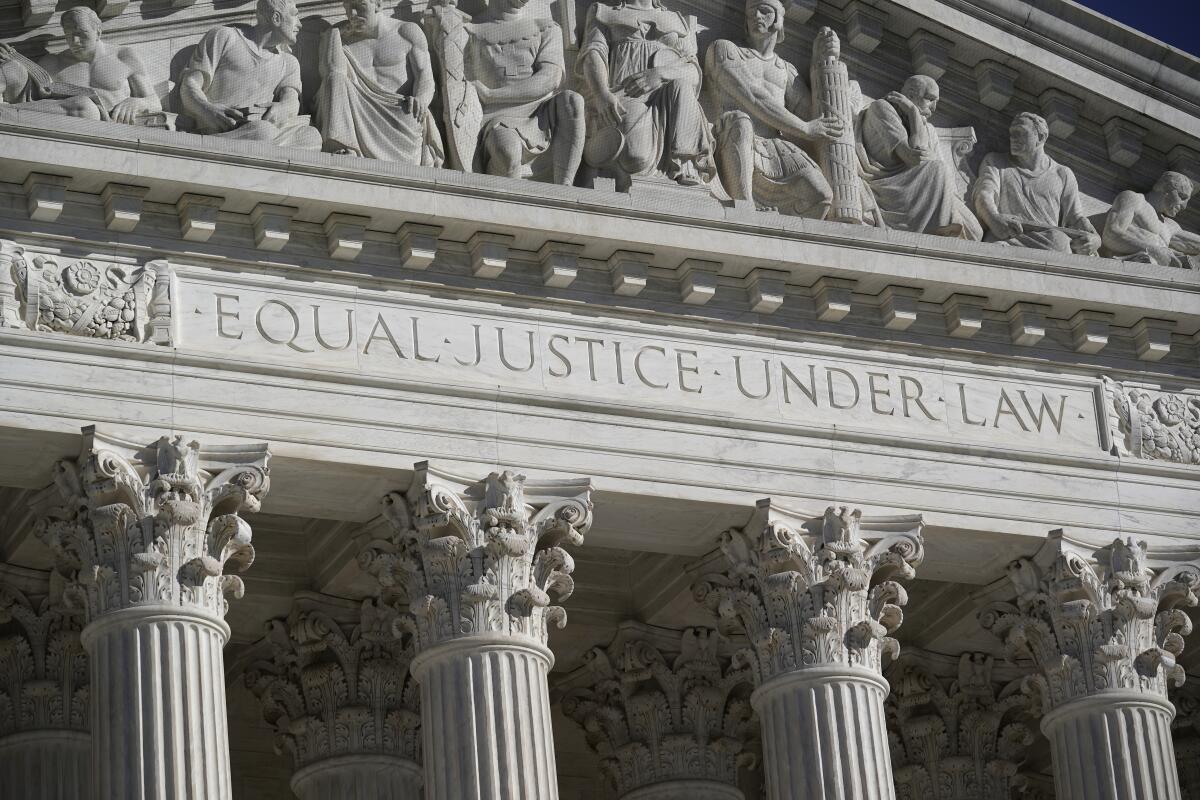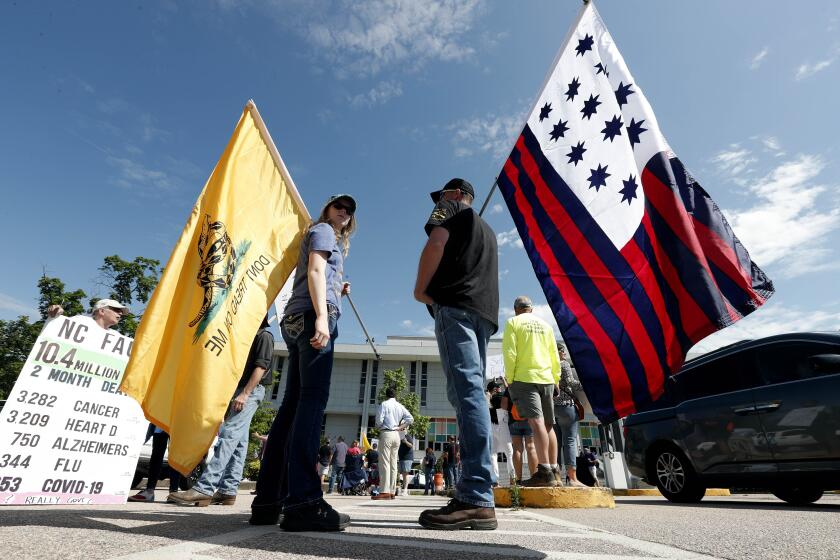Editorial: Supreme Court checks the radical independent state legislature theory

- Share via
With the 2024 election campaign already underway, the U.S. Supreme Court on Tuesday wisely rejected a pernicious legal theory that could have made it even easier for partisan majorities in state legislatures to achieve an unfair advantage in congressional elections. The 6-3 decision in a case from North Carolina dealt a serious blow to the so-called independent state legislature doctrine under which state supreme courts would be powerless to review gerrymandered congressional maps or other aspects of congressional elections.
In 2022, North Carolina’s Supreme Court struck down a congressional map drawn by Republican state legislators, holding that it unfairly favored the GOP in violation of several provisions of the state constitution. Among them is a command that all elections “shall be free,” which the court interpreted to mean that “every vote must count equally.”
In appealing to the U.S. Supreme Court, Republican state legislative leaders pointed to the Elections Clause of the U.S. Constitution, which says that the “times, places and manner” of congressional elections shall be prescribed by state legislatures (subject to an override by Congress).
The ‘independent state legislature’ theory is dead. Still, federal lawmakers should take action to ward off other dangers to democracy.
But on Tuesday, Chief Justice John G. Roberts Jr., writing for the majority, rejected the radical view that state courts had no role in reviewing arrangements for congressional elections. After tracing the history of judicial review in the states, Roberts noted that he and his colleagues “are asked to decide whether the Elections Clause carves out an exception to this basic principle. We hold that it does not. The Elections Clause does not insulate state legislatures from the ordinary exercise of state judicial review.”
Roberts also cited precedents of the court, including a 2015 decision holding that Arizona could entrust congressional redistricting to an independent commission (an approach also used by California).
Without going into detail, Roberts did say that state courts may not “so exceed the bounds of ordinary judicial review as to unconstitutionally intrude upon the role specifically reserved to state legislatures” by the U.S. Constitution and added that “we need not decide whether that occurred in today’s case.”
That seems to leave open the possibility that state courts could go too far in reviewing legislative decisions about federal elections, inviting intervention by federal courts. But even with that qualification, Tuesday’s decision should make greedy partisan majorities in state legislatures think twice before trying to engineer an unfair advantage in redistricting or election laws. It also protects California’s independent redistricting commission, whose future could have been threatened by a ruling for North Carolina’s Republican legislators.
The decision in Allen vs. Milligan is most significant for what the court didn’t do: It did not further weaken the law of voting rights as many expected.
The court also deserves praise for not taking the easy way out by declaring the North Carolina case moot because of changes in the composition of the North Carolina Supreme Court that led that court to change its position on whether it could address partisan gerrymandering.
Finally, this decision suggests that, in at least this area of the law, a majority of the court may have recognized the danger to its own credibility of extreme decisions that, in Roberts’ words at his Senate confirmation, cause a “jolt to the legal system.” The court should have exercised the same restraint a year ago instead of recklessly overruling Roe vs. Wade, a decision that had protected the right to abortion for nearly half a century.
Nevertheless, Tuesday’s ruling puts a necessary check on an extreme conservative political theory that would have imperiled democracy throughout the nation.
More to Read
A cure for the common opinion
Get thought-provoking perspectives with our weekly newsletter.
You may occasionally receive promotional content from the Los Angeles Times.












